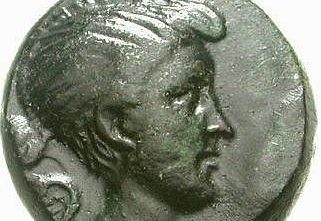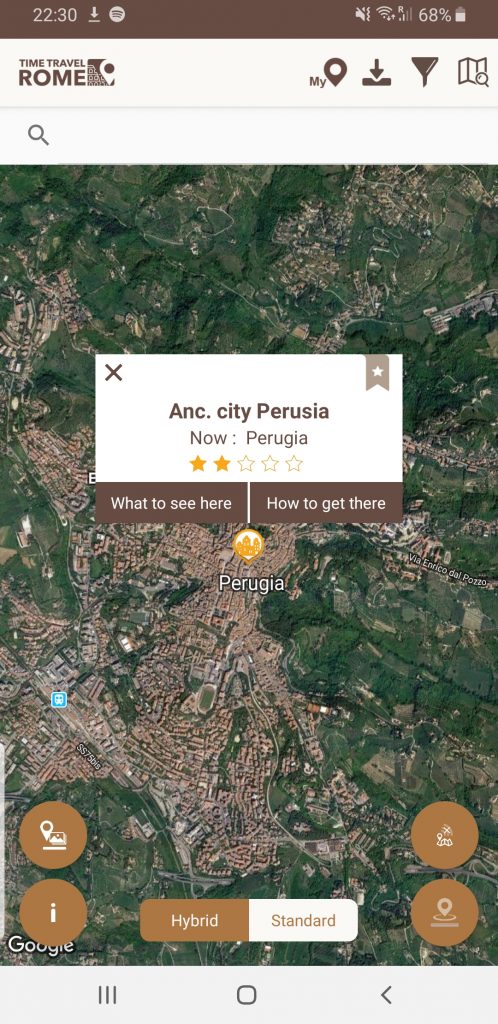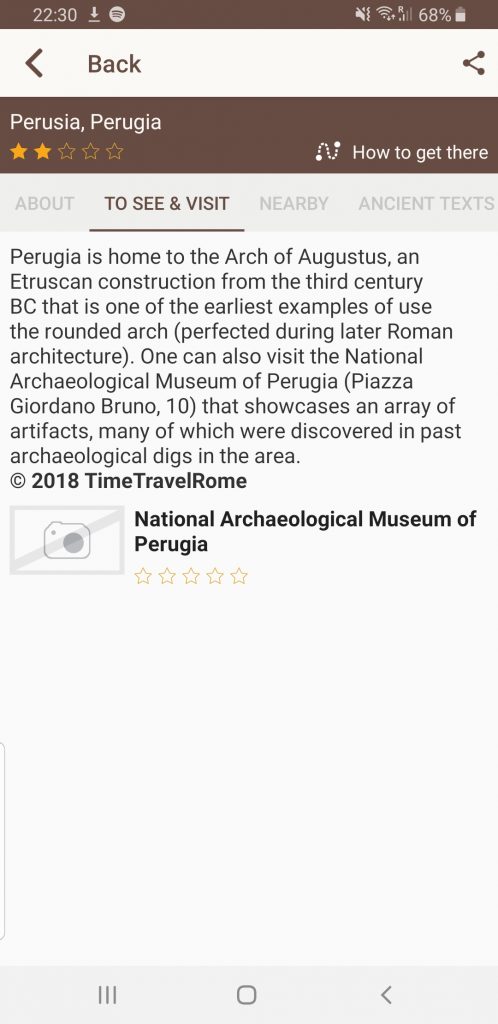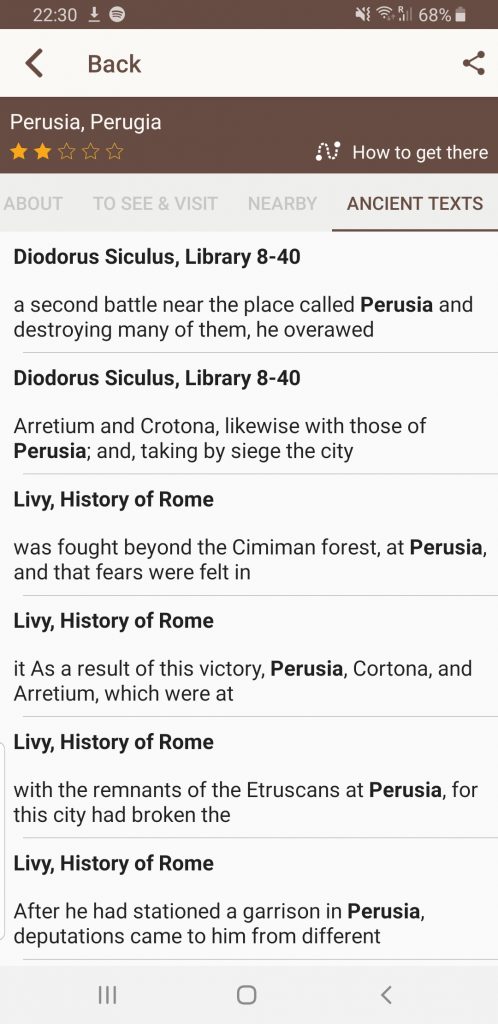As one of the twelve confederate cities of Etruria, ancient Perusia, now Perugia, was an important settlement of the Etruscans. It fought in early conflicts with Rome, and was a leading force in the rebellion of 295 B.C. However, the rebellion failed, and Perusia had no choice but to seek a peace treaty with Rome. By the time of the Second Punic War, Perusia was solidly under the Roman Republic and contributed to the defense of Italy against the invading Carthaginians. Though on track to become a major city in the developing Roman Empire, Perusia did not become a colony until just after 250 A.D., largely due to the destruction it suffered during the eponymous Perusine Wars. In 40 B.C., with the Roman Republic torn between two powerful men, Fulvia Antonia made her final stand in Perusia.
Fulvia
Though modern history often believes that women could not be involved in the political realm, the ancient historians themselves prove this false, mentioning many famous women whose political clout and machinations matched that of the men around them. One such woman was Fulvia. Intelligent, charming, ambitious, and ruthless, she possessed the skills necessary to navigate the treacherous political atmosphere of the failing Roman Republic and exerted powerful influence both over and through three well-placed husbands. She even earned the distinction of being the first living woman in Roman history to be displayed on a coin, and at a time when the only other living men on coins were the powerful three members of the Second Triumvirate.
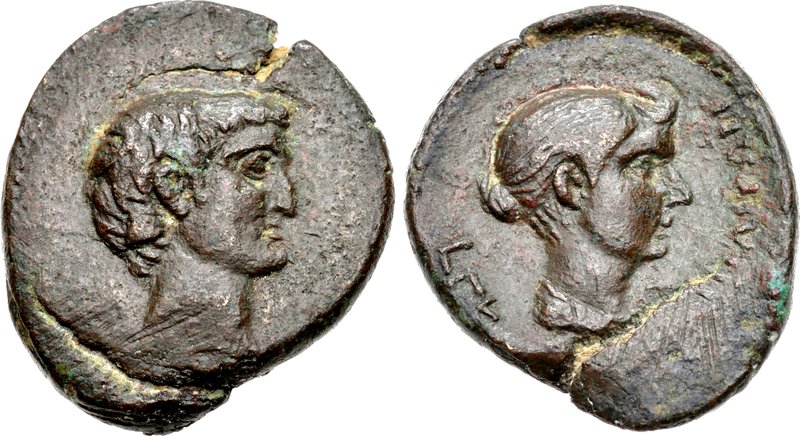
First Marriage
She first married Publius Clodius Pulcher. Clodius reflected Julius Caesar, whom he indeed supported, in that despite his wealth and status, he worked hard to become popular with the people of Rome, making him rather unpopular with his fellow Senators. In 52 B.C., Clodius’s rivalry with Titus Annius Milo devolved into gang violence in the streets. In one such confrontation, Milo’s supporters murdered Clodius and left his body on the side of the road. Another senator found the corpse and brought it back to Fulvia.
Fulvia placed the wounded body on display in her atrium and publically mourned him, arousing much sympathy. Eventually, Clodius’s body was paraded, still naked, to the forum, rousing mob riots in the streets that burned down the Senate building while cremating Clodius within. Milo was eventually put on trial, and Fulvia testified against him, moving many of the attendees with her speech and her tears. Milo was found guilty and exiled, and Fulvia remarried within the year.
Widowed Again
Her second husband, Gaius Scribonius Curio, found his political career significantly advanced by Fulvia’s influence. However, after only two years of marriage, Fulvia was again a widow. Curio died fighting for Julius Caesar in Africa. Fulvia’s next marriage reached even higher, to Mark Antony, Caesar’s right hand man. Fulvia remained highly active in supporting her husband politically.
The gangs that had surrounded her husband, Clodius, had transferred their allegiance to her, and she brought them to fight for Antony when he clashed with Publius Cornelius Dolabella in the Roman Forum. She and Antony both became fierce political rivals of Cicero, and Cicero targeted her in his speeches just like her husband. When Cicero tried to have Antony declared an enemy of Rome in his absence from the city, Fulvia’s campaigning helped to block the measure.
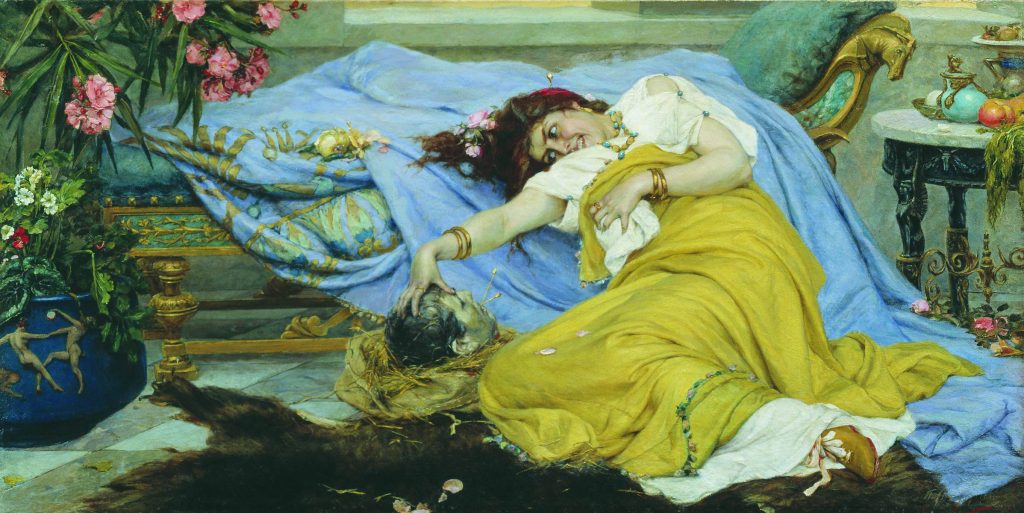
The Fourth Triumvir
After Caesar’s murder in 44 B.C., Antony and Fulvia seized wealth and power. Eventually, Antony formed the Second Triumvirate with Octavian and Lepidus, and Fulvia offered her daughter from her first marriage, Clodia, to Octavian in marriage to further seal the deal. Some historians have argued that Fulvia was an unofficial fourth member of the Triumvirate.
In the proscriptions that followed, Cassius Dio wrote that she “also caused the death of many, both to satisfy her enmity and to gain their wealth… When, however, the head of Cicero also was brought to them one day, Antony uttered many bitter reproaches against it and then ordered it to be exposed on the rostra more prominently than the rest… And Fulvia took the head into her hands before it was removed, and after abusing it spitefully and spitting upon it, set it on her knees, opened the mouth, and pulled out the tongue, which she pierced with the pins that she used for her hair, at the same time uttering many brutal jests.”
The Perusine War
By 41 B.C., Caesar’s murderers were dead, Antony was in Egypt with Cleopatra controlling the eastern half of the Roman Empire and Octavian was attempting to organize the western half from Rome. Yet their shaky alliance was crumbling, and back in Rome, Fulvia again took an ambitious step in political matters. With the partnership of Lucius Antonius, Antony’s brother, she gathered soldiers loyal to Antony and moved against Octavian. The Antonine forces even held Rome itself briefly, but withdrew when Octavian swept through Sentinum and continued on towards Rome. Octavian retook the capital without bloodshed, and Fulvia and Lucius retreated to Perusia.
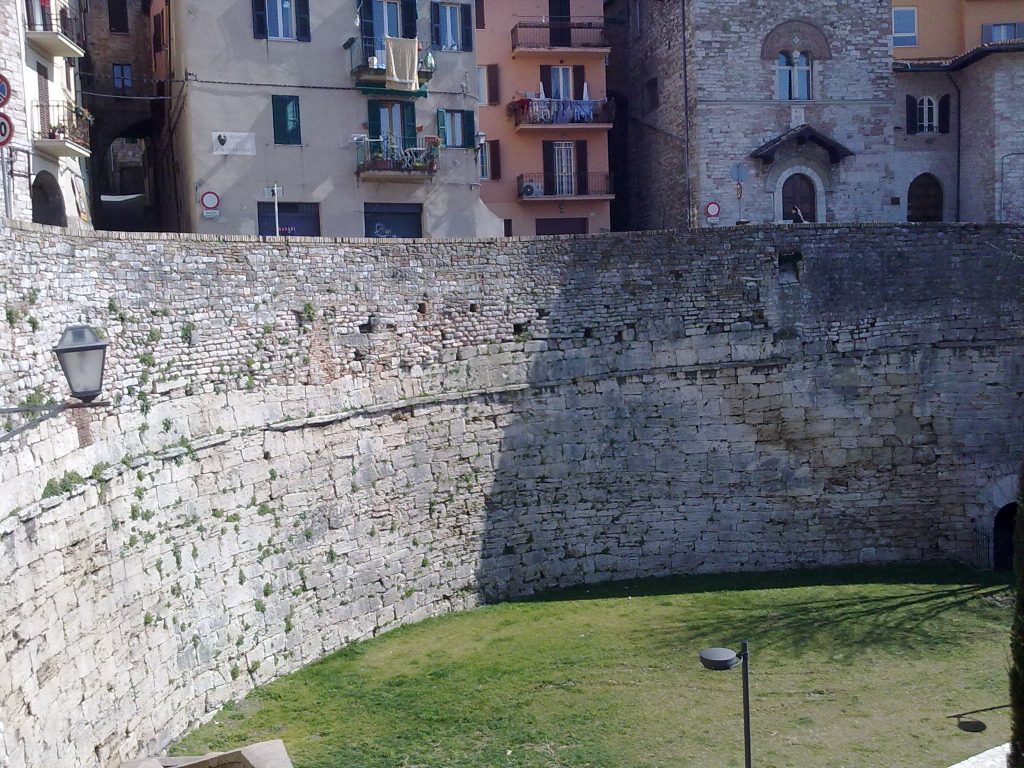
The city occupied a strong strategic position, and the siege was a long and bloody one, only ending when Fulvia and Lucius were forced to surrender in the face of starvation. Octavian spared Fulvia and Lucius, only exiling them, but he dealt brutally with those under them. Three hundred soldiers and many of the junior senators who had declared in support of the Antonine party “were led to the altar consecrated to [Julius] Caesar and were there sacrificed.” Octavian executed the majority of the citizens of Perusia and put the city itself to flame. The old Etruscan walls were some of the only structures to survive. It was not until centuries later that Perusia returned to its former glory.
A Tame Resolution
Fulvia, meanwhile, rejoined her husband in Athens. He was reportedly furious with her over the events of the Perusine War. Nevertheless, she nearly convinced Antony to march on Rome and engage directly with Octavian, but became ill and passed away before she had fully won him over. In the absence of her influence, Octavian offered Antony a peace agreement and he accepted, prolonging the conflict over the rule of Rome for another decade.
What to See in Perusia now ?
Perugia is home to the Arch of Augustus, an Etruscan construction from the third century BC that is one of the earliest examples of use the rounded arch (perfected during later Roman architecture). One can also visit the National Archaeological Museum of Perugia (Piazza Giordano Bruno, 10) that showcases an array of artifacts, many of which were discovered in past archaeological digs in the area.
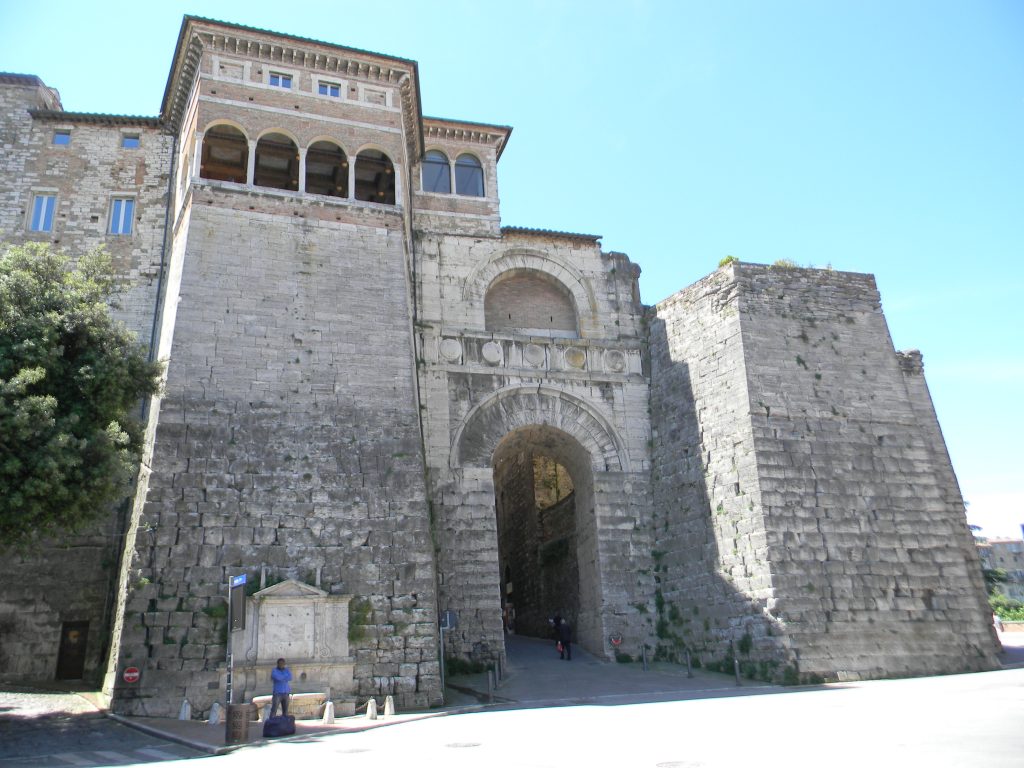
Perusia on Timetravelrome App:
Sources: Plutarch, Life of Antony; Cassius Dio, Roman History; Cicero, Philippics; Asconius, On Cicero’s Pro Milone.
Author: Marian Vermeulen for Timetravelrome
Header image: PHRYGIA, Eumeneia. Circa 41-40 BC. Laureate female head (Fulvia ?) right / Athena standing left, holding shield and spear. Source: www.cngcoins.com. Used by permission of CNG.
